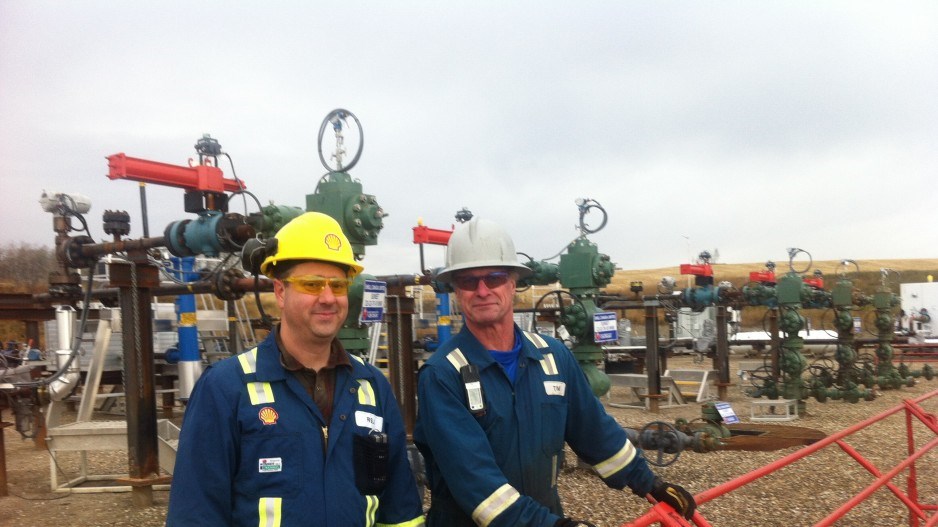(This story has been updated to clarify the number of wells Shell will need to drill to meet LNG Canada's ongoing need for gas.)
In unconventional gas production such as horizontal drilling and hydraulic fracturing, about 80% of a new well’s gas comes up in the first three years, before output goes into a long, slow decline.
But these wells can produce gas at low levels for up to 20 years.
Shell Canada already has 500 wells in production in its Groundbirch operations south of Fort St. John, and once the LNG Canada plant and Coastal GasLink pipeline are built, its gas production will shift from east to west. As a 40% partner in LNG Canada, Shell is obliged to supply 40% of the gas.
All of the partners in the LNG Canada partnership, except Korea Gas Corp., have substantial natural gas assets in northeastern B.C. Production from those assets is expected to fill roughly half of LNG Canada’s gas needs for Phase 1, a two-train plant.
In other words, there are significant amounts of natural gas being produced now by the LNG Canada partners that can shift west to Kitimat. The LNG Canada project alone therefore is unlikely to trigger the kind of fracking frenzy that some have predicted.
Starting about two years before LNG Canada’s plant goes into production, Shell expects to bring in its drilling rig. The company expects it will need to drill about 20 to 30 new wells each year over two years to meet additional demand from LNG Canada and to replace production from some of the wells whose production will have declined by then. From then on, the LNG Canada partners will need to drill about 200 new wells per year for the life of the LNG plant.
“Last year, B.C. drilled 608 [wells],” said Chris Montgomery, manager of government and community relations for the Canadian Association of Petroleum Producers. “We need about a third more of that.”
While the LNG Canada project may not spark a drilling bonanza, even a small uptick in drilling provides a substantial amount of investment and jobs, since it is labour-intensive.
Montgomery said two billion cubic feet per day of demand (roughly the demand from LNG Canada’s first phase) would translate into 20,000 direct, indirect and induced jobs in B.C., $500 million in additional revenue to the B.C. government and $3.7 billion in added GDP growth.
That’s just from the upstream activity, and doesn’t include the jobs and revenue from the pipeline and LNG plant in Kitimat.
“Alberta gets a little bit of an uplift, but most of the uplift from LNG production comes from here in British Columbia,” Montgomery said.
See related story, Electricity can defuse LNG's 'carbon bomb' study says.




